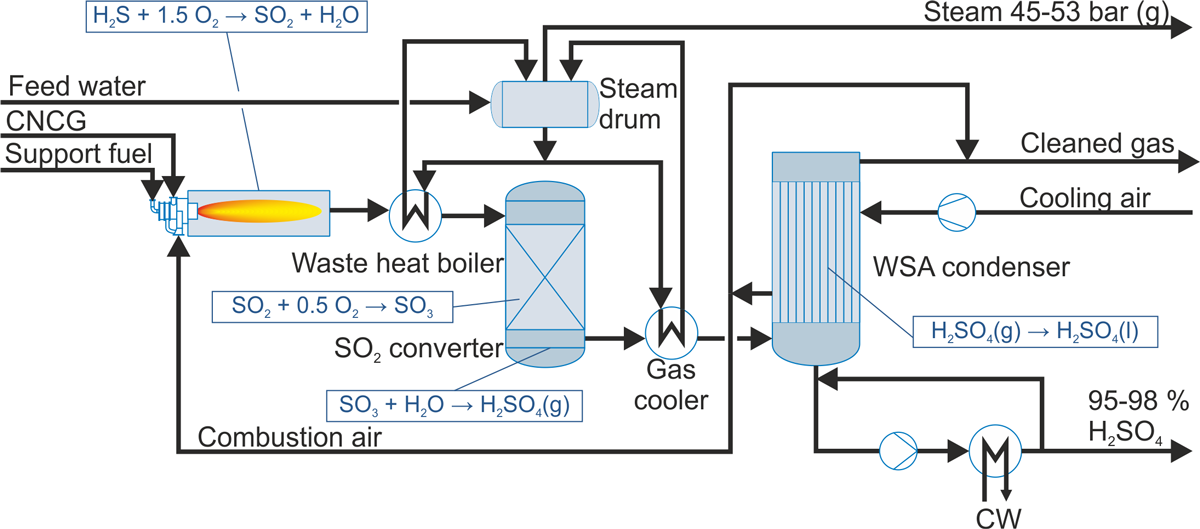The basic WSA process
In the WSA process, commercial-grade sulfuric acid is produced on-site from a mill’s Concentrated Non-Condensable Gases (CNCGs) by combustion, catalytic conversion and condensation. More than 99.9% of the sulfur in CNCGs can be converted to concentrated sulfuric acid, if required.
Sulfuric acid is generated in a mill by first oxidizing the CNCGs into sulfur dioxide in an incinerator, then further oxidizing the sulfur dioxide into sulfur trioxide over a catalyst, and finally condensing the sulfur trioxide together with the water vapor that comes from the kraft process with the CNCGs.
Since the process is operated above the acid dew point from incineration all the way to the condenser, the hardware can be constructed out of standard materials, lowering the capital cost, without the risk of corrosion within the system. Due to optimized conditions, the process is not sensitive to the composition of a particular CNCG stream from a particular mill, or to its moisture content.

